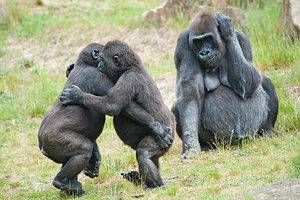Many theories exist trying to prove that humans actually evolved from monkeys, apes, and gorillas. Although there may be some similarities between humans and the mentioned animals, gorillas and apes definitely did not evolve into humans. Four distinct animal subspecies go by the name gorilla.
Although they have 98 percent of human DNA and are intelligent enough to understand sign language and utilize tools, they are unrelated to humans in any manner. Their size and behaviors raise really interesting questions- what they eat, how their poop looks, whether or not their poop is harmful to humans, and more. Discover everything you’ve ever wanted to know about gorilla poop in this post.
Where Can Gorillas Be Found?
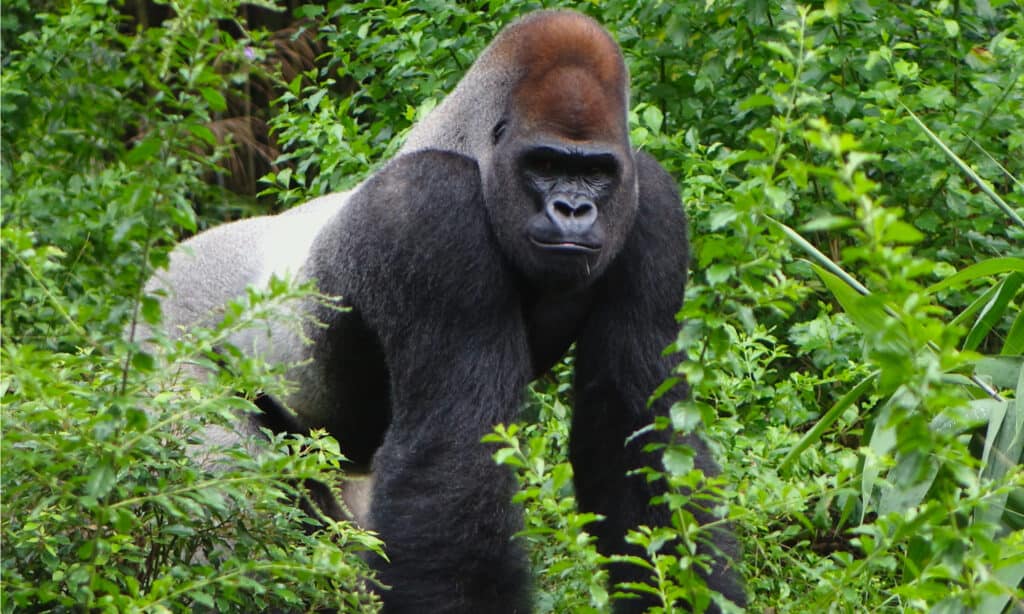
Gorillas are the largest of the great apes and among the smartest creatures on the planet.
©CXI/Shutterstock.com
The term gorilla refers to two species of great apes (the western gorilla and the eastern gorilla) further classified into subspecies. The western gorilla (Gorilla gorilla) is divided into the western lowland gorilla (Gorilla gorilla gorilla) and the Cross River gorilla (Gorilla gorilla diehli). The eastern gorilla (Gorilla beringei) is made up of two species: the mountain gorilla, scientifically known as Gorilla beringei beringei, and the eastern lowland gorilla, also called the Grauer’s gorilla (Gorilla beringei).
Gorillas are the largest of the great apes and among the smartest creatures on the planet. The two living species are indigenous to Sub-Saharan Africa. The more prevalent variety, the western gorilla, is found in the tropical forests of Gabon, Equatorial Guinea, the Democratic Republic of the Congo (DRC), Cameroon, the Central African Republic, and the Republic of Congo. The eastern gorilla is less common and is found in the lowland forests of the DRC as well as the mountains of Rwanda, Uganda, and the DRC. The IUCN rates both species as critically endangered due to habitat loss and hunting.
What Does Gorilla Poop Look Like?
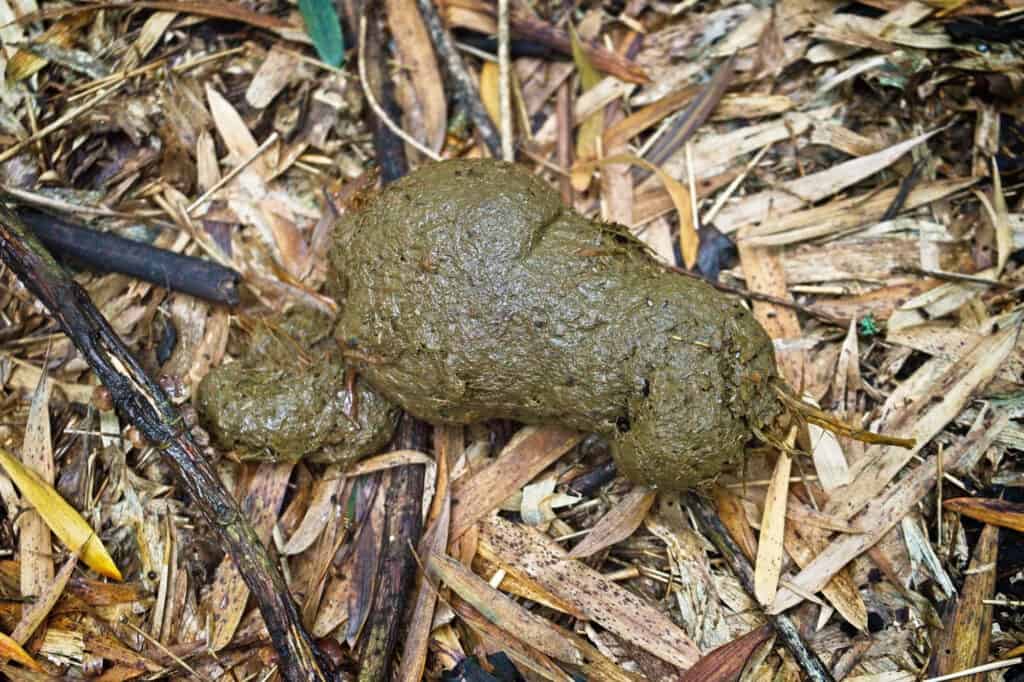
Usually varying between light and dark brown color, the texture of gorilla poop is not solid.
©Radzimy/Shutterstock.com
One of the many similarities gorillas share with humans is the way their poop looks. Because of their primary leafy diet, their poop comes out sausage-shaped with cracks on its surface. Usually varying between light and dark brown color, the texture of their poop is not solid, nor is it mushy enough to show signs of diarrhea.
Scientists utilize gorilla poop to learn about a gorilla’s diet, stress levels, and other intriguing things. Gorillas poop a lot, every few hours. On average, a 6-foot-tall gorilla that weighs 350 pounds can create around a half-pound of fecal material with each pass. Keep in mind that this is the equivalent of a very big human bowel movement.
Although it is somewhat difficult to find gorillas on your own out of a zoo, finding their droppings is not so difficult because they poop a lot and leave it lying around.
Is Gorilla Poop Harmful?
Just like with human poop, it is advisable to stay away from ingesting gorilla poop. However, some research shows that gorilla poop is helpful in trying to help understand evolution and human health. Gorilla poop also helps the environment, particularly forests. Adult male gorillas can eat as much as 45 pounds of food in one sitting, including fruits and their seeds, and these seeds are spread around every time these gorillas stop to poop.
What Do Gorillas Eat?
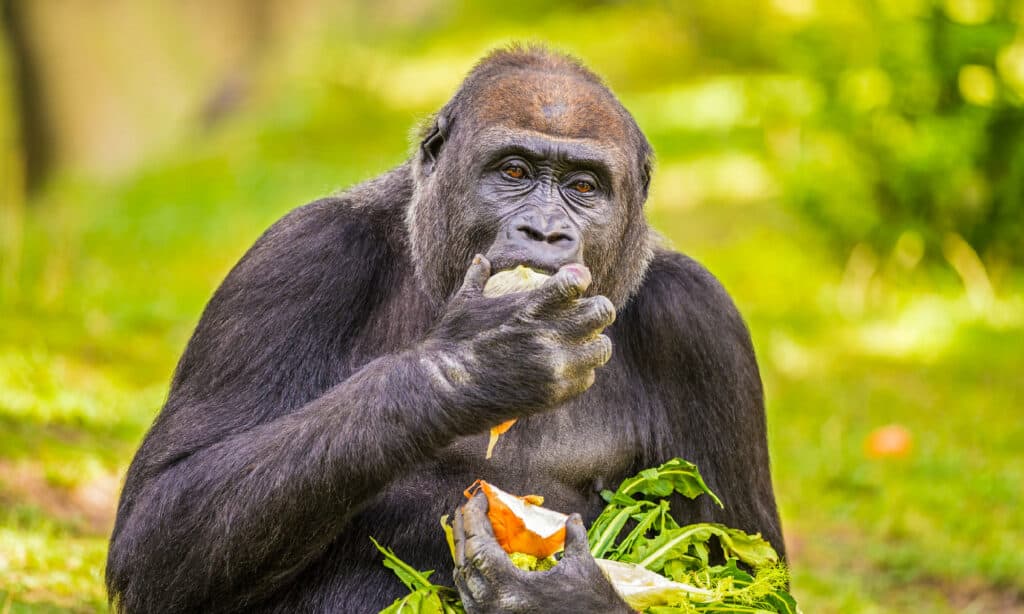
Gorillas consume a vast range of fruits and vegetables.
©iStock.com/miroslav_1
Gorillas are predominantly herbivorous and eat mostly plant stuff, despite their massive, muscular bodies. Gorillas consume a vast range of fruits and vegetables, all of which are found naturally in their environment. The majority of the gorillas’ protein needs are met by insects, which they will also consume. Although there are myths about gorillas that devour humans, most of these tales are untrue. Gorillas rarely participate in such behavior, in contrast to chimpanzees, who will occasionally consume other animals or cannibalize other chimpanzees. Despite the fact that a gorilla’s food might vary based on where it lives, all gorillas have similar dietary habits.
The senses of gorillas are remarkably comparable to those of humans and other apes. They rely on their senses of sight, smell, taste, touch, and hearing to locate food and stay alive in the wild. When it comes to food gathering and avoiding their main predators, leopards, sight and smell are possibly a gorilla’s most crucial senses. In order to obtain the nutrients they require, they must eat a high-fiber diet and enormous amounts of plant material that is frequently deficient in nutrients.
Do Gorillas Eat Their Own Poop?
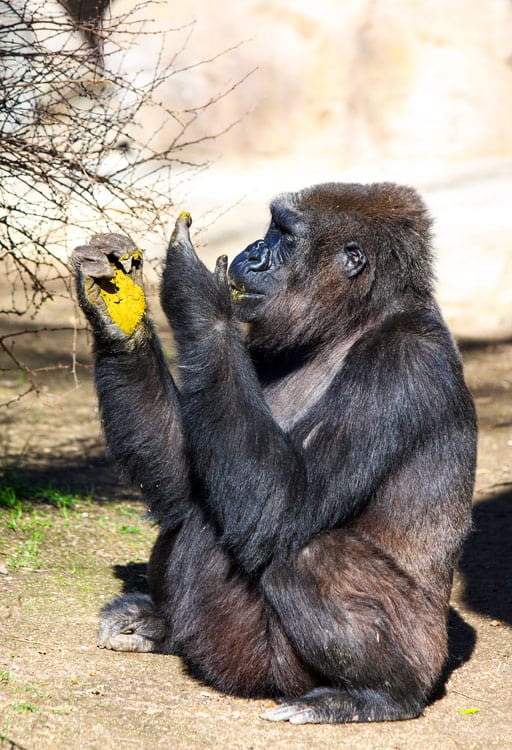
Gorillas eat their own poop, as well as the feces of other gorillas.
©Natursports/Shutterstock.com
Gorillas also practice coprophagia, in which they consume both their own and other gorillas’ excrement. Through their repeated consumption of seeds, gorillas may be able to better utilize vitamins or other nutrients.
Up Next:
Gorilla Teeth: Their Size and How They Compare with Human Teeth
How Many Gorillas Are Left In The World?
The photo featured at the top of this post is © Philippe Clement/Shutterstock.com
Sources
- Atlas Obscura / Accessed September 21, 2022
- Inverse / Accessed September 21, 2022
- UPI / Accessed September 21, 2022
Thank you for reading! Have some feedback for us? Contact the AZ Animals editorial team.





